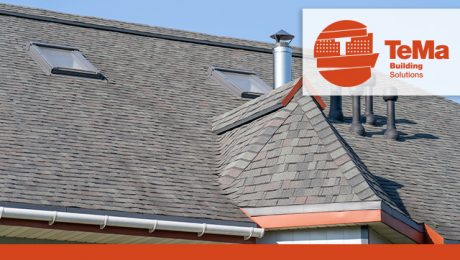Vapour diffusion, retarder and barrier: how do they differ?
On flat or sloping roofs, water and moisture arrive from outside with atmospheric precipitation. However, water seepage is just as hazardous and is created inside with vapour that may accumulate as a result of temperature changes between outdoor and indoor environments.
In building elements, the persistence of moisture and condensation can cause a structure to deteriorate. This is evident in the appearance of efflorescence (those white spots that appear as a result of the solidification of salts contained in water) and, subsequently, mould.
Multilayer vapour membranes are excellent for protecting buildings against water seepage. They can be divided into vapour diffusion, barrier and retarder.
Although often confused and considered interchangeable, they actually perform quite separate functions.Let’s take a look at them in detail.
What makes them differ?
What makes these products differ is mainly the degree of vapour breathability, its resistance capacity, measured with an Sd indicator. The lower the Sd value, the more breathable the material. The UNI 11470:2015 standard sets out application methods for breathable screens and membranes and their use on pitched roofs, on continuous or discontinuous supports or in direct contact with thermal insulation.
Vapour diffusion
With Sd ≤0.1 m, diffusion membranes are impermeable to water but highly permeable to vapour that is created in a room and can escape.
On roofing, a breathable diffusion membrane is applied to the outside of a building over insulation, as it facilitates the evaporation of moisture, even residual moisture, whereas on the inside – below the insulation – a retarder or barrier should be chosen.
TeMa Building Solutions suggests T-VAPO FAST 150, T-VAPO FAST 180 andT-VAPO FAST 210.
Vapour retarder
These membranes (2 m < Sd ≤ 20 m) completely block the passage of water but only partially block vapour, thereby controlling the passage of moisture and preventing the formation of interstitial condensation.
They are generally placed inside a structure because it slows down the passage of vapour that is conveyed, in winter, by warm air to the outside and which might deteriorate materials.
TeMa Building Solutions suggests T-VAPO SLOW NET.
N.B. The watertightness of breathable membranes and vapour retarders refers to their ability to withstand rainwater if a roof covering is damaged or breaks: it should not be considered in relation to pressurised water.
Vapour barrier
Lastly, a vapour barrier is a material that is completely impermeable to both water and vapour (Sd ≥ 100 m). It is mainly, but not exclusively, used in humid environments such as swimming pools.
The position of a vapour barrier depends on the heat flow: it should be placed against insulation on the warm side.
TeMa Building Solutions suggests T-VAPO STOP and T-VAPO STOP ALU.
Which one should you choose?
There is no single answer. A technician will recommend the right product after a passive thermographic analysis and precise thermal engineering design. In principle, the most important factor is to block vapour where it forms while allowing any residue to pass through so that the waterproof layer remains intact.
As mentioned above, choosing which membrane to use requires an evaluation of various aspects, including climatic conditions, the type of insulation, structural components and a technical assessment based on thermo-hygrometric measurements.
Discover the full range offered by TeMa Building Solutions here.
- Published in BUILDING, Vapour barrier, Vapour diffusion, Vapour retarder


